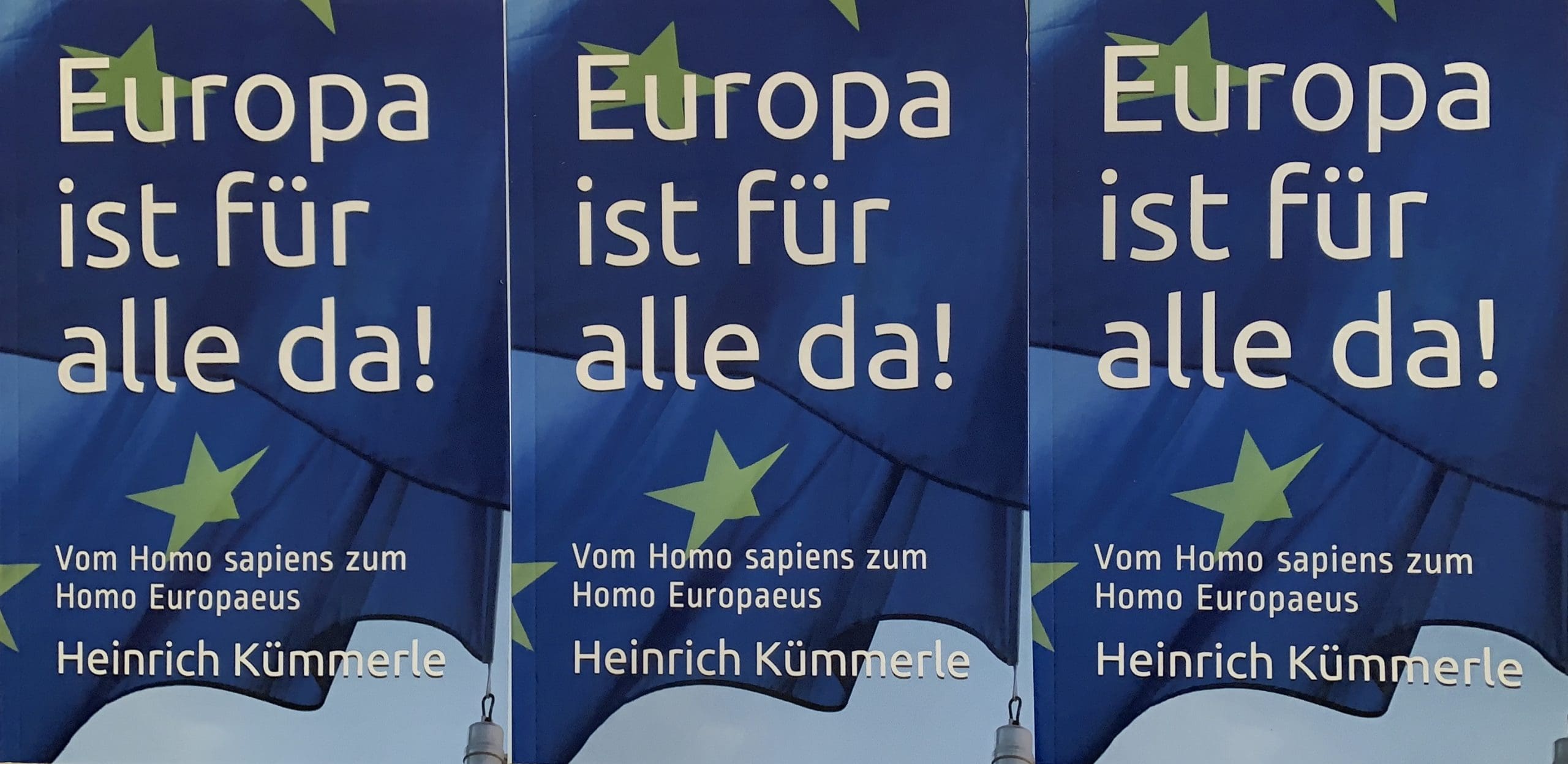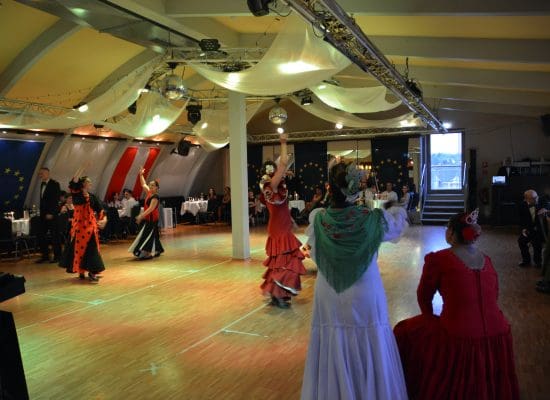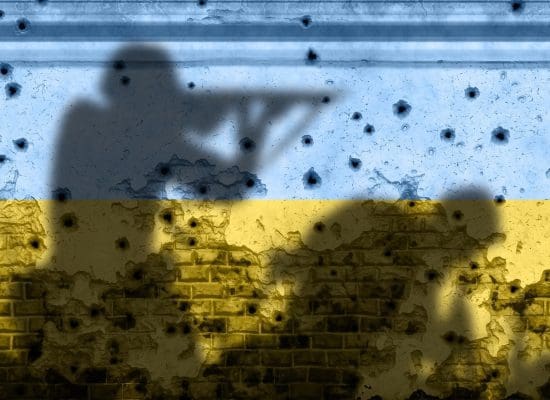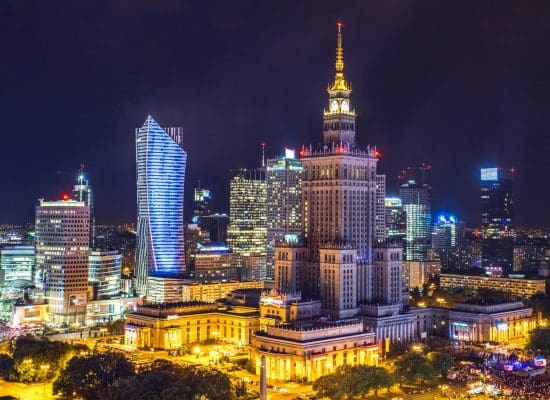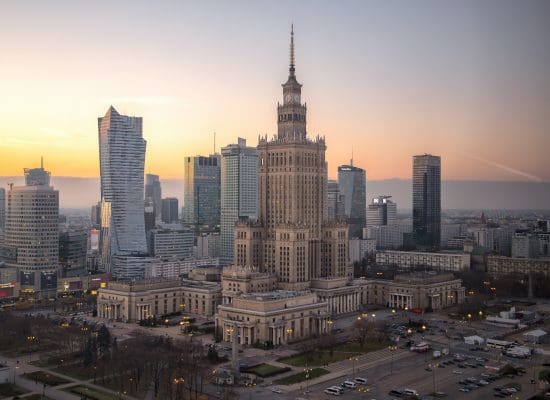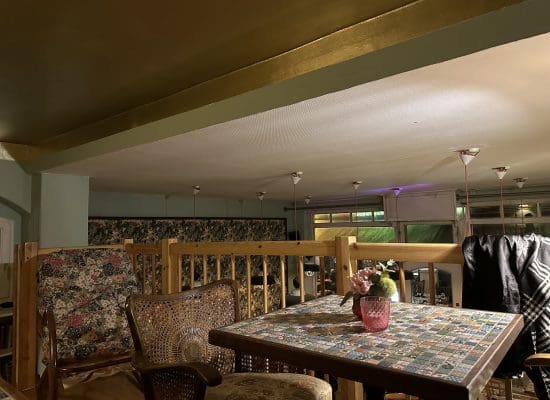Feature photo: three book covers of the book “Europe is for everyone!”
The chairman of the Heilbronn district association of the non-partisan EUROPA-UNION, Heinrich Kuemmerle jr., has written a book entitled “Europe is for everyone!“. If one looks at the extensive literature on Europe that already exists, one might ask whether another book could bring new insights, whether the subject of Europe has long since been exhausted. Kümmerle also asks this question and admits that many of these books have had a strong influence on his basic attitude. Together with the works and writings about Europe – by Carlo Schmids classic “Europe and the power of the mind”, Jacques Delors "Memoirs of a European", the 2013, in the middle of the financial crisis, published "The Bound Giant - Europe's Last Chance". Martin Schulz and the extensive histories of Tony Judts "History of Europe from 1945 to the Present" and from Ian Kershaws “Roller Coaster – Europe 1950 to the Present” can be summarized as the book, which was written in a concentrated manner Heinrich Kuemmerle into the larger European context. In the bibliography, Kümmerle names many more books and writings on Europe.
Towards the end of his book, the author attempts an answer to the question: "What is Europe?". For him, Europe is synonymous with citizen participation. "Ultimately, the citizen - each one of us - decides whether it is the final end or just the actual beginning of this wonderful project of a better world." mark a challenge for future generations. It is not foreseeable when the goal will be reached. Europeans have embarked on an arduous journey…” Reported on what has and has not happened so far Heinrich Kuemmerle detailed and with lots of data.
One can truly describe Europe and the European integration process as a never-ending story. In the foreword to his book, the author thanks a number of advisors who have ensured that he has not lost the thread. The author of this observation - also a member of the Heilbronn district association of the EUROPA-UNION - was repeatedly tempted to incorporate his own thoughts on the European project beyond the explanations in the book. I could not resist this temptation. So more has emerged here than a book review in the usual sense. The question as to whether another book was needed on the subject of Europe can be answered unreservedly in the affirmative. The European project is far from over, the outcome is open. Europe will, indeed must, be looked at in many books.
In search of European identity
Even before the description of the previous European unification process Heinrich Kuemmerle a difficult and complex keyword. In two book chapters he deals with the "European identity" over 16 book pages. Given the complexity of the subject, he could have written a separate book on it. He points out that committed Europeans have long been trying to create a European identity. It is about the question of what makes a European. Kümmerle is concerned with more than mere structures of “administrators and bureaucrats”; more than just an "elite project". For him - and not only for him - Europe must (again) become a "citizens' project", as it was between 1945 and the early 1950s. But what is the cement that holds this project together?
In a speech to the European Parliament in Strasbourg on March 8.3.1994, XNUMX, the then President of the Czech Republic, Vaclav Haveli, also dealing with the keyword “European identity”. "A reading of the Maastricht Treaty, no matter how significant its importance as a historical document, is unlikely to bring the European Union any genuinely enthusiastic supporters, or rather: hardly any patriots in the form of people who actually regard this complicated organism as their fatherland or their homeland or feel some level of their sense of belonging.”
Vaclav Haveli in 1994 called on the European Union to adopt a charter "which would have to clearly define the ideas on which it is based, the meaning it has and the values it seeks to embody". EUROPA-UNION Germany decided on a “Charter of European Identity” on October 28.10.1995th, XNUMX in Lübeck. Chapter I of this document states:
“Keeping peace, preserving our environment and organizing a life of dignity for all require a common policy. Uniting Europe means providing the answer to the historical challenge of the present and the painful experiences of the past. Every European is called upon to contribute responsibly to building a European peace community.”
The last chapter of the charter - it is entitled: "On the way to a European identity" - reads, among other things:
“Freedom, peace, human dignity, equal rights and social justice are our highest goods. In order to secure and further develop it, Europe needs a morally convincing political figure and a policy of solidarity that strengthens European community spirit, makes the European Union credible and of which we Europeans can be proud. When that is achieved, there will also be a stronger European identity.”
Since December 1.12.2009, 2, the Treaty of Lisbon has applied to all EU member states. In the first articles of the treaty, especially in article 1995, the goals and values of the Union are formulated in a similar way to the Charter of the EUROPA-UNION Germany of XNUMX. The Charter of Fundamental Rights of the European Union is not an integral part of the Lisbon contract. However, the Member States – with the exception of Poland – expressly recognize the content of the Charter of Fundamental Rights as legally binding.
And yet the question remains open as to whether, in the meantime – beyond the European integration process in the narrower sense – it has been possible to further develop the European identity. It is good and important that the values and European fundamental rights are anchored in the Lisbon Treaty; a lot still has to settle in the minds and hearts of Europeans. The pride in Europe, the awareness of being European, must continue to grow. Perhaps many European patriots have achieved what could be described as rationally founded constitutional patriotism with a view to their “homeland Europe”.
That too Heinrich Kuemmerle I see the European identity as a large and still unfinished construction site from the three questions he asks in his book:
- Can there even be a European identity?
- Do we Europeans need a common identity to form a unit?
- Isn't just "being human" enough as a common identity?
This list of questions could be extended: how urgent is the question of a European identity? Or: are there priority and more important construction sites in the European Union? In view of the very different historical experiences and cultural characteristics of the 27 member states, the development of a European identity is somewhat in competition with the motto: "United in diversity." Lebensmodellen” goes and also writes that “not everyone wants to become European.” Perhaps he was thinking of the unsuccessful discussion about a “German Leitkultur” when he warned that Europeans (could) achieve with their newly found identity to differentiate oneself from others. All of this reminds me: Everything is in motion and in flux. Culture changes and with it any ideas about identity; especially as soon as they go beyond the core clauses in the treaties and in a later constitution.
Important is Kümmerle's reference to increasing nationalisms, coupled with totalitarian fantasies. Not infrequently, it is superficially about the money from Brussels. But if you take a closer look at some of the decisions of the ECJ on a number of legislative projects in this or that Eastern European member state, there is much more at stake than money. The convinced European may be surprised by the interpretation of the concept of sovereignty in these states and the way in which criticism as "interference in the internal affairs" of the country in question is rejected. This reference to “internal affairs” was and is used by autocrats against outside criticism. It should not be used among EU partners that are contractually linked. There may be a special kind of EU identity crisis when citizens in net contributor countries launch an initiative against members who are happy to accept funding from Brussels but pay little attention to the obligations associated with membership.
The EU Beginnings: Impetus to Prevent a New European Catastrophe
At the end of the Second World War, different images were engraved in people's memories:
- The destroyed cities and villages and the emaciated faces of the people and these pictures were not only seen in Germany, all of Europe was bled dry in 1945;
- the horrifying images when the people of Germany had to realize what had happened in the name of their country in Buchenwald and in all the other death camps;
- the film and photos of the Allied victory parades at the end of the war.
What was to be done so that such images would not be repeated? How was it possible to prevent the Germans from being gripped again by the desire for war? There were voices that advocated not only holding German leaders accountable but punishing the whole country. But far-sighted politicians in the West and a series of developments prevented the mistakes made after World War I from being repeated and possibly sowing the seeds for a new war. The Germans - especially the West Germans - were fortunate to be admitted back into the European house after a short time.
Kümmerle writes about the desire for peace, which runs like a red thread through the history of Europe to this day, and reports how, in the discussion about what should come “after”, what should come after the end of the war, the French resistance movement also included the European one level was considered. The illegal newspaper of the group Combat calls for the creation of a United States of Europe. Kümmerle quotes from "Het Parod", the leading Dutch resistance organ, in which this war was seen as the greatest crisis in state sovereignty. "If it has not been in vain, it must result in a European cooperation between the states that bring part of their sovereign power to a collectively administered body." Kümmerle also refers to the resistance against the Nazi regime in Germany. As an example, it should be mentioned that one of the flyers of the student group “The White Rose” also refers to Europe: “The ground on which a new construction will be possible can only be created through generous cooperation between the peoples of Europe. Any centralized power, such as the Prussian state tried to exercise in Germany and Europe, must be nipped in the bud... Only a healthy federalist state order can still fill a weakened Europe with new life today.”
In another leaflet, the members of the "White Rose" quote Novalis (1772 - 1801), the poet of early German Romanticism: "Blood will flow over Europe until the nations become aware of the terrible madness that is driving them around in circles, and will be struck and soothed by sacred music to former altars in a colorful mixture step, hear works of peace and a great festival of peace is celebrated on the smoking battlefields with hot tears.” A fervent call for peace. But it was to be a very long time before Sedan Day on September 2nd, that big holiday celebrated in Prussia in particular with pomp and military parades, was no longer a German holiday.
Hans and Sophie scholl and many other resistance fighters had to pay with their lives for their courage to confess. They became witnesses to the fact that in Germany there were not only perpetrators and followers with the Nazis, but also that spark of decency and empathy that could protect our country from accusations of collective guilt.
If you look at the groups active in Europe and the dates that Kümmerle mentions for almost all European countries, you could certainly speak of enthusiasm for Europe immediately after the end of the war. On September 6.9.1946, XNUMX, the American Secretary of State James F Byrnes in Stuttgart he gave his "Speech of Hope", in which he promised, among other things, economic support - and not the punishment of Germany, as was the case after the First World War. The British historian Tony Judt quoted from this speech: "As long as the presence of occupying forces in Germany is necessary, the United States Army will be part of this occupying force." Americans reflected on the difficult relationship with the Soviets. "The Germans were not the only ones who needed such insurance," Judt continues; "The British in particular were concerned about the desire of the Americans to abandon Europe to its fate...".
The bitter chalice the Germans were ultimately spared is demonstrated by the statements by American politicians quoted by Judt: "It must be made clear to the Germans that Germany's ruthless warfare and the fanatical resistance of the Nazis destroyed the German economy and made chaos and suffering inevitable and that they cannot escape responsibility for what they have brought upon themselves... (Directive of the Joint Chiefs of Staff of 26.4.1945/XNUMX/XNUMX, which considers Henry Morgenthaus etc. reproduced).
On the other hand, the view of George C Marshall, the American Secretary of State: "The solution is to break the vicious circle and to strengthen the confidence of Europeans in the economic future of their countries and the entire continent." Europe and especially West Germany were lucky that Marshall's ideas finally prevailed.
Held on September 19.9.1946, XNUMX Winston Churchill in Zurich his "Speech to the academic youth of the world". It contained the sentence that was later quoted again and again: "We have to build a kind of United States of Europe."
In September 1946, at a time that was downright dramatic for Europe and the idea of Europe, the Hertenstein Conference took place, which Kümmerle describes as the essential personal achievement of the European federalists. The twelve theses of the “Hertenstein program“ can be found on the EUROPA-UNION Heilbronn website. The Heilbronn EUROPA-UNION organizes the Hertenstein Talks every year. It is to the Kümmerle book's merit that, in addition to naming the dates, conference locations and results, it also describes the ramifications and the larger, but sometimes only minimal differences of opinion within the European movement. There is broad agreement on the goal of a United States of Europe with a federal constitution; There were and are differences of opinion on how to achieve this goal.
From the Montanunion to the Treaty of Lisbon – Europe is getting structures
Private organizations and movements draft position papers, discuss and decide on them at congresses and conferences. State institutions – including supranational Europe – need above all solid structures in order to be able to work. The first European structure was the European Coal and Steel Community (Montanunion), founded with the Treaty of Paris on April 18.4.1951, 23.7.1952. The ECSC Treaty came into force on July 31.7.1961, XNUMX. Kümmerle describes the ECSC as the first supranational organization in human history. Under the title "Unification of the nation states", his book is now a conscientious chronicle of the large and also the less large treaties and agreements in the course of the European unification process. If you are looking for the dates and places of events, you will find them in this section of the book; For example, that the United Kingdom applied for membership of the EEC on July XNUMX, XNUMX, but that the accession negotiations ended after a veto by Charles de Gaulle canceled on January 14.1.1963, 27.11.1967. British enthusiasm for Europe suffered a further dampener – no matter how great or less great it may have been at the time – when on November 22.11.1972, 11 de Gaulle again spoke out against the United Kingdom joining. British accession was only sealed on November 23.6.2016nd, 1.1.2021 – i.e. XNUMX years after the application for membership. A little sarcastically, one could say that the British exit from the EU was faster: on June XNUMX, XNUMX, the British voted for Brexit, on January XNUMX, XNUMX they will leave the European Union.
Connection lines to Heilbronn
In the chapter already quoted about the "unification of the nation states", Kümmele reports on numerous other treaties, when and where they were decided, what their goals were and who the main actors were. In connection with the Treaty of Rome of March 25.3.1957, 1.1.1958, which came into force on January XNUMX, XNUMX and is considered the birth of the European Union, Kümmerle mentions that it Jean Monnet succeeded, active politicians from all democratic camps, such as the German Social Democrats Eric Ollenhauer and Herbert Wehner, to win. "For the first time in Germany, social democracy also agrees to the ratification of a treaty on European integration."
This “swing” by the SPD towards the integration of the Federal Republic into the West was preceded by many dramatic and top-class discussions in the Bundestag about the basic direction of federal German politics. Which goal should be given priority: Western integration or the reunification of the country?
At the end of the 1950s there were first attempts between the parties to achieve a common foreign and security policy. After Khrushchev had allowed the summit conference of the “Big Four” in Paris to fail on May 16/17.5.1960, 30.6.1960, the Bundestag debated the resulting situation on June XNUMX, XNUMX. Herbert Wehner, the then deputy SPD parliamentary group leader, announced in a comprehensive tour d'horizon - his speech comprises almost 10 minutes of minutes - the new foundations of the German and European policy of the SPD. Two passages from Wehner's speech were particularly significant for the topic of Europe:
- After Europe has already been divided by the communists, we must not contribute to dividing Europe again. Rather, as far as we can do something about it, everything must be set in motion so that it can work together in a broad community.
- The Social Democratic Party of Germany assumes that the European and Atlantic treaty systems to which the Federal Republic belongs form the basis and framework for all German foreign and reunification policy efforts.
There is a connection to Heilbronn from Wehner's speech in the German Bundestag. On June 25.6.1960, XNUMX, the SPD state party conference took place in the Harmonie festival hall in Heilbronn Herbert Wehner gave the main speech. He presented essential points of the speech that he gave five days later in the Bundestag. Wehner warmed up to a certain extent in Heilbronn.
Many notable quotes
At the beginning of every chapter and section of his book Heinrich Kuemmerle a quote from a politician, writer or other personality that fits the content. He thus achieved a remarkable collection of thoughts and statements that show how much the European project has occupied and still occupies many people. Kümmerle writes that the reason for writing this book is, on the one hand, a statement by Jean-Claude Juncker On the other hand, it was the conviction that a common Europe was exactly the solution to the threat posed to all societies by egoism, intolerance, chauvinism, nationalism and totalitarianism, which is now more serious than ever before.
The Juncker quote reads:
“Anyone who thinks that the eternal question of war and peace in Europe will never arise again could be very wrong. The demons aren't gone, they're just sleeping."
The statement by sounds similarly ambiguous Walter Hallstein, a predecessor of Juncker, who was chairman of the EEC Commission from 1958 to 1968:
"Anyone who does not believe in miracles in European affairs is not a realist."
Short and clear is a statement from Hans Dietrich Genscher:
"Our future is Europe - we don't have another one."
Or those of Willy Brandt:
“The day will come when the hatred that seems inevitable in war will be overcome. One day Europe must become a reality in which Europeans can live.”
Excursion: Andalusia and the roots of Europe in the Islamic world
The above quotes deal with the current situation and European hopes for the future. The statement by the former pope quoted in the Kümmerle book has a different aim Benedict XVI on the occasion of his speech in the Bundestag on September 22.9.2011, XNUMX:
"The culture of Europe arose from the encounter between Jerusalem, Athens and Rome - from the encounter between Israel's belief in God, the philosophical reason of the Greeks and the legal thinking of Rome. This triple encounter forms the identity of Europe.”
This is not about the Europe of today or the Europe of the future, this is about the roots, the foundations and the values and where they come from. In a nutshell: what is the European Union and what is don't you? What is important in the Pope's quote is what is mentioned - but also what is not.
Immediately following this quote, the Pope said in his Berlin speech:
“This threefold encounter forms the inner identity of Europe. Conscious of man's responsibility before God and recognizing the inviolable dignity of man, she has set standards of law that we are tasked with defending in our historic hour."
Essential components of European culture come from the Near and Middle East, from Hellenistic Greece and from ancient Rome. The British historian Peter Frankopan In his book "Light from the East - A New History of the World" he deals - beyond the geographical area - with the cultural content that flowed from the Near and Middle East to Europe for centuries and was reworked and processed here. On the back flap of the book it is explained that Frankopan does not make Europe but the Near and Middle East - like Pope Benedict - the starting point of the story: "He (Frankopan) tells of the first advanced civilizations and the three monotheistic world religions, which from from this region began their triumphal procession.”… “The actual melting pot, the “Mediterranean area” in the truest sense – the center of the earth – was not a sea separating Europe and North Africa from each other, but lay in the middle of the Asian continent,” writes Frankopan and in the book chapter "From Mecca to Cordoba - the triumph of Islam" tells of the transfer of culture and knowledge from the Moorish-Islamic world to medieval Europe.
The reasons and background for the rapid military, religious and cultural triumph of the new religion presented by Frankopan will not be presented here. Events in the great metropolis of Baghdad, where countless texts from Greek, Persian and Syriac were translated into Arabic in the 9th century AD, are important for later intellectual development in Europe; including the works of the ancient Greek philosophers. “These texts then served as a starting point for further studies. Education and learning became a cultural ideal.” The British historian names Islamic medicine, pharmacology, optics, astronomy and astrology, logic, theology, mathematics and philosophy, and finally the Arabic numerical system that introduced the zero. While Muslim commentators have great respect for Ptolemy and Euclid, For Homer and Aristotle brought up, wrote the Church Father Augustine"Inquisitiveness" is just sick. "Science was conquered by faith," writes Frankopan. "It's almost the exact opposite of the world we see today: the fundamentalists weren't the Muslims, they were the Christians...".
Andalusia, the southern region of Spain, the Moorish-Islamic al-Andalaus, which was ruled in parts by Moorish Muslims for 700 years, developed into a bridge for the transfer of culture and knowledge between the thriving Arab world and medieval Europe. Cordoba has at times been a hotspot of Islamic-Judeo-Christian scholarship and exchange. Here the ancient texts previously translated into Arabic are translated into Latin and thus accessible to Europeans. The Moorish heritage is still clearly visible in Andalusia: the Mezquita, today's cathedral and former mosque in the city, and the Alhambra, the Moorish city castle of Granada, have been included in the UNESCO World Heritage List.
In the exchange of knowledge and culture between the Orient and the Occident, the Staufer emperor must also Frederick II, the builder of the enigmatic Castel del Monte in Apulia. He, too, gathered Christian, Muslim and Jewish scholars at his court.
And this cultural exchange between Europe and the Muslim world is still taking place today - almost unnoticed and hidden by the reports of Islamist acts of violence, hatred and intolerance. The impulses are now going in the other direction; today's cosmopolitan Europe is giving back what it received centuries ago. Discussed, written and argued about, for example, one European Islam. How can the religion and culture of the Muslims be combined with the basic values and social norms that have developed in Europe over the centuries - also with that "light from the East"? On September 16.9.2016, XNUMX, reform Muslims from Germany, Austria and Switzerland published a joint declaration in Zurich Freiburg Declaration, in which they called, among other things, for the development of modern readings of the Koran, based on a historical-critical analysis of the text. The declaration begins with the sentence: “We dream of Islam reform.” Elsewhere it says: “We stand for a humanistic, modern and enlightened understanding of Islam in a contemporary context and see ourselves as secular Muslims. According to our understanding of the Koran, faith is based on the very personal and individual relationship of the individual to God. Faith represents a source of spirituality, resilience and inner strength.”
Towards the end of the declaration it says: “We firmly reject extremism, discrimination, the glorification of violence and segregation. For us, democracy and human rights are the basis for the peaceful coexistence of all people in our society.” In a nutshell: extremists of all stripes should not be able to invoke religion.
This discussion among Muslims about a modern reading of their religion - about a European Islam in European society - is not possible in Wahhabi-oriented Saudi Arabia, nor in the Iran of the ayatollahs, nor in Erdogan's Turkey, where religions are state-controlled. This discussion can only be conducted in a tolerant Europe. Tolerance was not always, but often, an important factor in the coexistence of people of different religions in al-Andalus. But also in Europe, the tolerant coexistence is a constantly new challenge.
An ambivalent view of the future of Europe
Under the heading "Beginning or End - Attempt at a Summary". Heinrich Kuemmerle the future of the European project. Optimism rings through when he writes: "All of our Europe, no matter how far one ultimately wants or is able to extend it, must definitely be viewed as something new that only came about in the middle of the last century as a result of diverse experiences and this with sometimes catastrophic effects and is therefore at best at the beginning of its own development.”
Kümmerle names the diverse problems facing this new Europe - scarcity of resources and diseases and their effects, such as migration or wars. The British historian Ian Kershaw In his book Roller Coaster – Europe 1950 to Today, he lists a whole range of other challenges for Europe and the rest of the world: climate change, demographics, energy supply, mass migration, multicultural tensions, automation, the widening income gap, international security. Kershaw writes that it is difficult to say how well Europe is prepared to deal with these problems. “How it will react to the challenges and shape the future of the continent is not only, but to a large extent, in the hands of the Europeans themselves.” He then makes an important statement: “In dangerous waters, the convoy is best left together and avoids drifting apart.” A reminder to everyone who wants to dream of a great future of independence.
I believe that the European Union has the knowledge and experience to help solve all these problems. This requires the common will of the member states. Dangers to the Union lie at another level. Kümmerle addresses them and laments the traditional nationalism. The Hungarian Prime Minister Viktor Orban describes his country as an "illiberal democracy" - a contradiction to what is written in the European treaties. The complacency and overconfidence of some member states is also dangerous for the future of Europe. They have come to terms with today's EU, which is still incomplete, and have come to terms with the status quo, not least because they believe they can live well with the money from Brussels. But an unfinished organization, a project that stops halfway, will fail in the end. For the European project, too, standstill ultimately means going backwards. That is why the treaty goal of an "ever closer union of the peoples of Europe" - above and beyond the need to solve all the other problems - must again come more to the fore in the European Union.
There are no patent remedies for this. As always, convinced Europeans need staying power and a pragmatic sense of what is possible in a certain situation, even in a crisis. In an interview on the corona pandemic, the experienced politician said Wolfgang Thierse: "As always, the future is open in this case ... We must hope that humanity will learn, but without having the illusion that the world will change completely." This insight can also be transferred to the European project.
Hans Müller, the author of this guest article, is a longstanding member of the EUROPA-UNION Heilbronn; he has earned his merits as the head of the "club history" working group, among other things.
He is not only known to many people in Heilbronn as the former head of the Office for Family, Youth and Senior Citizens in the city of Heilbronn, but also as a seasoned social democrat.
His special interest as a local historian is the history of Heilbronn, so it is not surprising that he can often be found in the Heilbronn City Archives, where he researches his articles and scientific contributions.
